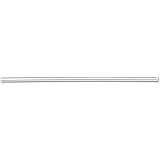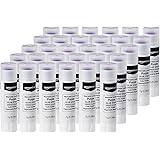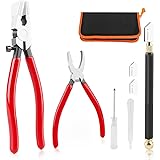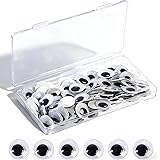Unleashing Creativity: How to Make Your Own Amazing DIY Phone Gadgets
The accompanying video beautifully illustrates that creating your own phone gadgets can be a surprisingly straightforward and rewarding endeavor. For those who enjoy a hands-on approach to technology, the world of DIY electronics offers a fantastic opportunity to customize and enhance smartphone functionality without breaking the bank. This guide will expand on the concepts presented, offering a deeper dive into the utility and creation of these ingenious homemade accessories.
Before embarking on any DIY electronics project, however, it is paramount that safety precautions are observed. Working with soldering irons, sharp tools, and electrical components carries inherent risks. Proper ventilation should be ensured when soldering, and safety glasses are highly recommended. Always verify your connections and power sources before testing, as errors could potentially damage your phone or other devices. Responsibility for any actions performed rests solely with the individual, as explicitly mentioned in the video’s warning.
Crafting a Custom Stylus for Enhanced Interaction
One of the simplest yet most effective DIY phone gadgets that can be made is a custom stylus. A stylus is often preferred for precision tasks on touchscreens, whether for digital art, detailed note-taking, or simply keeping your screen free of fingerprints. While many commercial options are available, a homemade version offers a sense of accomplishment and can be tailored to specific preferences.
The fundamental principle behind a touch-screen stylus is its ability to conduct a small electrical current, mimicking the conductivity of a human finger. This is why a simple piece of plastic will not work. Materials like conductive foam, foil, or even certain conductive fabrics can be utilized as the tip. When crafting one, care is taken to ensure the conductive material is securely attached to a comfortable handle, which can be made from an old pen, a chopstick, or any non-conductive rod. The tip’s softness and shape are crucial for smooth interaction and preventing screen scratches, allowing for fluid navigation and input.
The Versatility of a Homemade USB OTG Adapter
Another incredibly useful homemade phone accessory highlighted is the USB On-The-Go (OTG) adapter. This gadget transforms your Android phone or tablet into a USB host, enabling it to connect to a wide array of USB peripherals typically associated with computers. The video showcases the essential components: a female USB Type-A port and a Micro USB connector, which is standard for many Android devices.
The magic of an OTG adapter lies in its wiring configuration. Standard USB cables are wired for device-to-host communication, but OTG cables internally short two specific pins (pin 4 and pin 5 on the Micro USB end) to signal the phone to act as a host. This reconfigures the phone’s USB port, allowing it to supply power and exchange data with external devices. For example, a USB flash drive can be connected for easy file transfer, or a keyboard and mouse can be used for a more desktop-like experience on a smartphone. Game controllers, external hard drives (with external power), and even some digital cameras can also be seamlessly integrated.
Building Your Own USB OTG Cable: A Step-by-Step Overview
The process of making a USB OTG adapter involves careful soldering, as indicated in the video. First, the male Micro USB connector’s pins must be identified; specifically, pins 4 and 5 need to be bridged, which is often the ID pin and ground. Secondly, the data (D+ and D-), power (VBUS), and ground (GND) pins of the female USB Type-A port are then carefully soldered to their corresponding pins on the Micro USB connector. This ensures proper data and power transmission between the phone and the peripheral.
After all the connections are securely soldered, it is imperative that they are properly insulated. Heat shrink tubing or electrical tape is commonly used to cover the exposed wires and solder joints, preventing short circuits and providing mechanical stability. While the video briefly shows covering the connections, this step cannot be understated for both safety and durability. A multi-meter can be used to check for continuity and shorts before connecting the adapter to a phone, ensuring everything is wired correctly. This detailed approach is what transforms simple components into functional, homemade phone accessories.
Understanding Bluetooth Module Integration for Smartphone Projects
The mention of a “Bluetooth Module” in the video opens up a vast realm of possibilities for custom DIY phone gadgets. Bluetooth modules are essentially small radio transceivers that enable wireless communication over short distances. When integrated into a project, they allow your smartphone to interact with other devices without physical cables, facilitating a wide range of creative applications.
While the video only shows the module itself, its potential applications in conjunction with a smartphone are extensive. For instance, a common use is creating a custom Bluetooth speaker. Here, an audio amplifier and speaker system are paired with a Bluetooth module, allowing a smartphone to stream music wirelessly. On the other hand, Bluetooth modules are often used in home automation or robotics projects, where a smartphone app can be developed to send commands to a micro-controller connected to the Bluetooth module, remotely controlling lights, motors, or sensors. These modules typically require a power source (often 3.3V or 5V) and communication lines (like UART) to interface with other electronic components, underscoring their role in sophisticated homemade phone accessories.
The specific model and capabilities of a Bluetooth module will dictate its complexity and intended use. Some modules are designed primarily for audio streaming (like the ubiquitous Bluetooth headphones), while others are built for data transfer (like fitness trackers or smart home devices). Pairing a Bluetooth module with a smartphone typically involves searching for the device in the phone’s Bluetooth settings and entering a specific passkey, establishing a secure wireless link. The versatility of these modules allows hobbyists to make phone gadgets that are truly unique and tailored to their specific needs, from remote controls to sophisticated sensor systems.
The journey of creating DIY phone gadgets offers an enriching experience for anyone interested in electronics and technology. It allows for the exploration of fundamental principles, encourages problem-solving, and ultimately results in functional, personalized items. Whether it is a precision stylus for digital art, a versatile USB OTG adapter for expanded phone connectivity, or integrating a Bluetooth module into a larger project, the satisfaction derived from these homemade phone accessories is immense. Continue experimenting and sharing your creations to inspire others.







